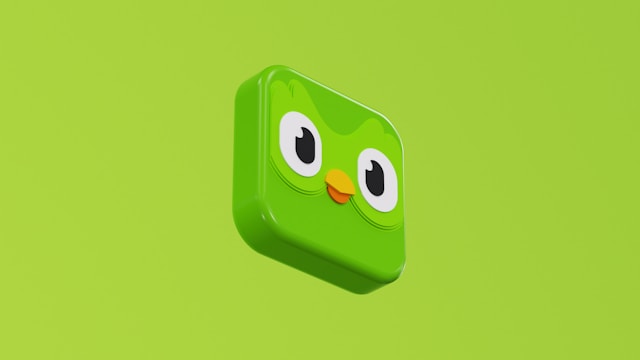大量広告からパーソナライズされた体験へ
マーケティングの分野は過去1世紀で劇的な変革を遂げ、一般的な一律アプローチから高度にターゲットを絞った行動主導型の戦略へと進化しました。この進化は主に、行動科学、心理学、テクノロジーの進歩によって形作られてきました。この興味深い旅を探ってみましょう。
歴史的発展
1900年代初頭: 近代広告の夜明け
- 1903年: ウォルター・ディル・スコットが「広告の理論」を発表。心理学を広告に応用した最初期の書籍のひとつ。
- 1920年代: 行動主義の父、ジョン・B・ワトソンが心理学の原則を広告に適用し、反復と感情的訴求の重要性を強調。
1930年代-1940年代:モチベーション研究の台頭
- アーネスト・ディヒターが消費者行動を理解するために心理学の概念を導入。(”Psychology in Market Research,” Harvard Business Review, 25(4). 1947, pp 432–43)
- 研究者たちが消費者の選択の背後にある無意識の動機を探り始める。
1950年代-1960年代:認知革命
- マーケターは消費者を単なる刺激への反応者ではなく、情報処理者として見始める。
- ブランドイメージの概念が注目され、消費者がブランドと形成する心理的連想が認識される。
1970年代-1980年代:消費者行動の研究が独立した分野として誕生
- フィシュバインとアイゼンによる合理的行動理論(1975年)などのモデルが開発され、消費者の意思決定を理解するためのフレームワークが提供される。
- マーケティング戦略がより消費者のニーズと嗜好に焦点を当て始める。
1990年代-2000年代: デジタル革命
- インターネットとビッグデータ分析により、より精密なターゲティングとパーソナライゼーションが可能に。
- オンライン行動が消費者インサイトの重要な源となる。
2010年代-現在:行動経済学と神経科学の時代
- 行動経済学の洞察がマーケティング戦略にますます適用される。
- fMRIなどの神経科学技術が、マーケティング刺激に対する消費者の反応を研究するために使用される。
重要な人物とマイルストーン
1923: クロード・ホプキンス(Claude Hopkins)が「科学的広告」(“Scientific Advertising” )を出版し、マーケティングにおけるテストと測定の重要性を強調。
1957: バンス・パッカード(Vance Packard)の「隠れた説得者」(”The Hidden Persuaders”)が、マーケティングにおける動機付け研究に公衆の注目を集める。
1960: ジェローム・マッカーシー(Jerome McCarthy)がマーケティングの4P(製品、価格、流通、プロモーション)を導入。
1967: フィリップ・コトラー(Philip Kotler)が「マーケティング・マネジメント」(”Marketing Management”)を出版し、マーケティング理論と実践を橋渡し。
1979: エイモス・トベルスキー(Amos Tversky)とダニエル・カーネマン(Daniel Kahneman)がプロスペクト理論に関する研究を発表し、不確実性下での意思決定に関する理論を革新。
1993: ドン・ペパーズ(Don Peppers)とマーサ・ロジャース(Martha Rogers)が「ワン・トゥ・ワンの未来」(”The One to One Future”)で1対1マーケティングの概念を紹介。
2008: リチャード・セイラー(Richard Thaler)とキャス・サンスティーン(Cass Sunstein)が「ナッジ」(”Nudge”)を出版し、意思決定における選択アーキテクチャの概念を普及。
2011: ダニエル・カーネマン(Daniel Kahneman)が「ファスト&スロー」(”Thinking, Fast and Slow”)を出版し、認知バイアスとその意思決定への影響に関する数十年の研究を統合。
現代の実践
今日のマーケティング戦略は、行動科学の洞察に深く根ざしている。
- パーソナライゼーション: データ分析と機械学習を使用して、個人の嗜好と行動に合わせてマーケティングメッセージをカスタマイズ。
- ナッジマーケティング: 行動経済学の原則を活用し消費者の選択を導く。
- ニューロマーケティング: EEGやアイトラッキングなどの神経科学技術を使って、消費者の反応を解析。
- エモーショナル・ブランディング: 感情とブランドを結びつけ、消費者の意思決定における感情の役割を重視。
- 社会的証明: 他人の行動に従う心理的傾向に基づき、マーケティング戦略に人間の社会的影響を活用。
- 選択アーキテクチャ: 行動経済学の洞察に基づき、意思決定に影響を与えるように選択肢の提示方法を設計。
- 行動セグメンテーション: 単なるデモグラフィックではなく、行動パターンに基づいて消費者をグルーピング。
- A/Bテストと最適化: 科学的手法を用いて、異なるマーケティングアプローチを継続的に実験し、有効性を最適化。
- 予測分析: ビッグデータと機械学習を活用して、消費者の行動や嗜好を予測。
- ゲーミフィケーション: ゲームデザインの要素をマーケティングに応用し、エンゲージメントとモチベーションを高める。
- 会話型マーケティング: チャットボットやAIを活用して、消費者とリアルタイムで個別のやり取りを行う。
- モーメントマーケティング: 消費者の行動やコンテキストに基づいて、最適なタイミングでメッセージを届ける。
Netflix:大規模なパーソナライゼーション
Netflixは、視聴習慣と嗜好を分析する高度なアルゴリズムを使用して、ユーザーを引き付け続けるパーソナライズされたレコメンデーションを提供。このアプローチは、顧客維持と成長に大きく貢献している。

Duolingo:ゲーミフィケーションとナッジマーケティング
Duolingoは、連続学習、レベル、報酬などのゲーミフィケーション要素を使用。また、プッシュ通知やメールを通じてナッジマーケティングを採用し、ユーザーに学習習慣を維持するよう促している。



将来のトレンド
行動科学を取り入れたマーケティングは、今後も技術の進化とともにさらなる発展を遂げるだろう。注目すべき新たなトレンドには以下が含まれる:
サステナビリティと倫理的マーケティング: 消費者が透明性や企業の社会的責任を求める中、倫理的なマーケティングへの注目が高まっている。
人工知能(AI): AIと機械学習がリアルタイムで消費者行動を予測し、マーケティング戦略をパーソナライズ。
拡張現実(AR)と仮想現実(VR): これらの技術は、消費者行動に新しい形で影響を与える没入型体験を提供。
結論
行動科学の発展は、マーケティングを一律なアプローチから、人間の行動の複雑さを考慮したデータ駆動型の戦略へと進化させた。
テクノロジーの進化と心理学の理解がさらに深まるにつれ、マーケティングにおける行動科学の応用は一層高度化していくと予想される。
しかし、より多くのツールが消費者行動に影響を与えるため、倫理的な考慮がますます重要になっている。
未来のマーケティングは、効果と倫理をバランスよく両立させ、消費者の自主性やプライバシーを尊重しながら、企業と顧客の双方に価値を提供することが求められるだろう。
マーケティング戦略を次のレベルへ
行動科学の視点から、マーケティング戦略をより深く探求してみませんか?お客様の行動を深く理解し、最適なマーケティング施策をご提案いたします。詳細はお問い合わせください。
